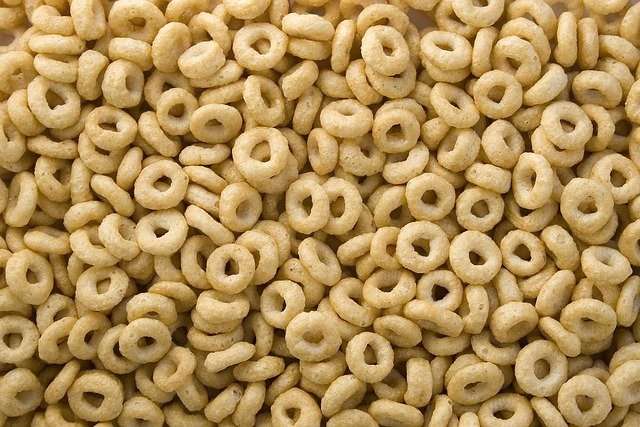Don’t tell me… Your kids have ditched the cheerios for the latest craze of breakfast cereals and instead of throwing them out, you want to know, can birds eat cheerios?
You may be surprised but yes, birds can eat cheerios and they’re safe for them to eat too… You’ll be surprised how many other types of wildlife will eat them, obviously without milk!

That’s not to say you should go right outside and sprinkle all manner of breakfast cereal on your lawn, but you may be interested to know why Cheerios can be a good bird snack.
Are Cheerios Healthy for Birds?
If you’re looking to throw out cheerios for the birds then the best type of cheerio to feed birds are original cheerios as they contain by far the least amount of sugar.
Original cheerios contain just 2g of sugar per cup of cereal (36g) whereas, both honey nut cheerios and frosted cheerios contain 12g per 36g portion.
Honey nut and frosted cheerios contain the most sugar. You shouldn’t feed either of these on a regular basis for birds, but as a ‘one off’ when natural food is limited.
The main ingredient in the popular breakfast cereal is Whole Grain Oats. Cheerios provide an important source of fuel for millions of people around the world.
Regular Cheerios or more commonly known, original flavour cheerios, are perfectly acceptable to serve to birds, puppies, and even some large species of fish.
Cheerios are made with whole grain and are free from artificial colours and sweeteners. The most vital factor, though, is that they’re low in sugar.
This is why it’s important to know the difference between the different Cheerios types. When Cheerios are recommended by veterinarians, they are talking about the Original kind.
How Do I Give the Birds Cheerios?
A great way to prepare Cheerios for feeding birds is to thread them onto a shoelace and tie them up high, on a branch in the garden.
This way, the birds can hang from the feeders and they’ll be away from any predators like cats or larger birds.
It’s a good idea to get kids involved in the preparation, too. It’s a project young ones will love to be involved in and is also a perfect way to introduce them to the importance of looking after local wildlife.
Take a look at these Bird Feeding Stations for Sale on Amazon
Why Don’t Pet Stores Sell Big Bags of Cheerios?
Because while cereal is a great snack or serves as one meal of the day, it’s not meant to be the only source of sustenance for anyone, even an animal.
Just as you wouldn’t feed a child on a diet of only breakfast cereal, you wouldn’t feed only Cheerios to your birds.
Birds are capable of finding much of the food they need naturally, including seeds, fruits, eggshells, and small insects.
You can help them out by adding a little extra for them, too. Some great items to buy and add to your feeding table include:
- Seeds, such as millet, oats, and nyjer
- Cornflakes
- Unsalted bacon rind
- Raisins and sultanas, providing they’re low sugar or sugar-free
- Dried mealworms or waxworms
- Fresh fruit, such as apples, oranges or pears, cut in half
They also enjoy unsalted peanuts, cracked corn, and suet cakes, which are perfect for giving them the extra fat they need to see them through the cold winter.
Don’t forget the freshwater!
Birds need access to clean drinking water and you will also find that they love to take baths, too, so be sure to change the water often.
What Foods Should I Avoid Feeding Birds?
We might think we’re doing the right thing by throwing a stale bread loaf out for them to nibble on, but even the slightest trace of mould spores can severely damage a bird’s health.
Like cereals, even fresh bread that isn’t made from whole grain has very little nutritional value and can do more harm than good.
Chocolate is just as harmful to birds as it is to other animals, like dogs and cats, and make sure that you don’t put out anything containing high levels of sugar or salt.
But, the next time you reach for your box of Cheerios… think about leaving a few out for your local birds, too!
Studies have shown that not only can feeding the local wildlife increase their chances of survival through the winter, but it also helps them to raise healthier chicks the following spring.